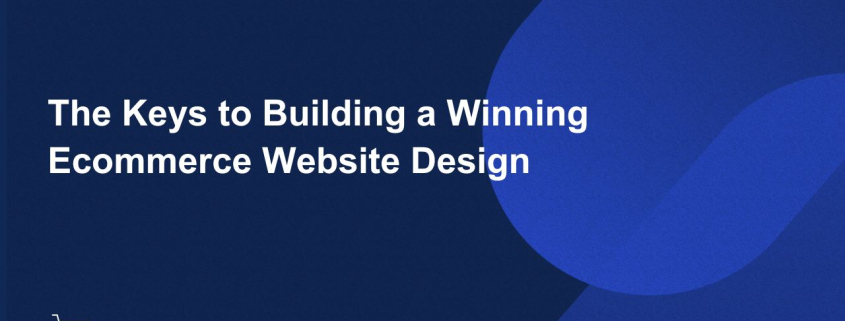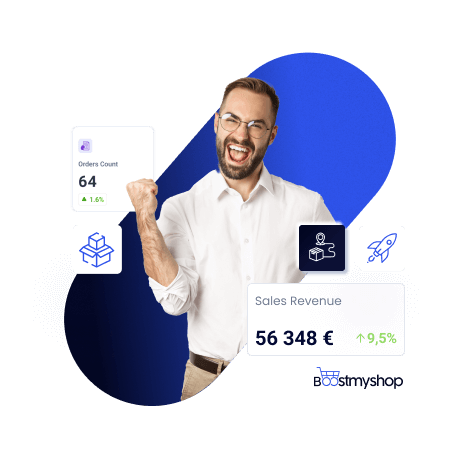The Keys to Building a Winning Ecommerce Website Design
Introduction:
In today’s digital age, having a visually appealing and user-friendly ecommerce website is crucial for any business looking to thrive online. With the rapid growth of online shopping, competition has intensified, making it essential to build a winning ecommerce website design that stands out from the crowd.
Designing an ecommerce website involves more than just creating an attractive layout. It requires a deep understanding of user behavior, seamless navigation, effective product presentation, and a seamless checkout process. In this comprehensive guide, we will explore the key elements and strategies you need to consider to build a successful online store that drives conversions and maximizes profits.
Understanding User Behavior
When it comes to ecommerce, understanding user behavior is paramount. By gaining insights into how users interact with your website, you can optimize their experience and increase conversions. Here are some key considerations:
Know Your Target Audience
To create a winning ecommerce website design, you must have a clear understanding of your target audience. Ask yourself:
– Who are your ideal customers?
– What are their preferences, needs, and pain points?
– What motivates them to make a purchase?
– How can you address their concerns and build trust?
By answering these questions, you can tailor your website design to resonate with your target audience and create a personalized shopping experience.
Streamline Navigation
Efficient website navigation is crucial for keeping visitors engaged and guiding them through their buying journey. Consider the following tips:
– Keep your navigation menu simple and intuitive.
– Use clear and descriptive labels for categories and subcategories.
– Implement breadcrumb navigation to help users understand their current location within your site.
– Include a prominent search bar for easy product discovery.
– Optimize your website for mobile devices to accommodate the growing number of mobile shoppers.
By simplifying navigation, you can ensure visitors find what they need quickly and effortlessly.
Enhance Website Speed
In today’s fast-paced world, users have little patience for slow-loading websites. A slow website can lead to high bounce rates and lost sales. Consider these speed optimization techniques:
– Optimize image sizes without compromising quality.
– Minify CSS and JavaScript files to reduce file sizes.
– Leverage browser caching to store static resources on users’ devices.
– Choose a reliable hosting provider that offers fast loading times.
– Regularly monitor and optimize your website’s performance.
By improving website speed, you can provide a seamless browsing experience that keeps visitors engaged and encourages them to make a purchase.
Visual Aesthetics and Branding
Consistent Branding
Creating a consistent brand image across your ecommerce website is essential for building trust and recognition. Consider the following strategies:
– Use your brand colors and typography consistently throughout your website.
– Incorporate your logo prominently in the header or footer.
– Develop a unique brand voice and tone for your product descriptions and website content.
– Ensure your visual elements align with your brand identity.
Consistent branding helps customers recognize and connect with your brand, fostering loyalty and trust.
High-Quality Product Imagery
When selling products online, high-quality visuals are crucial for enticing customers and showcasing your merchandise effectively. Consider these tips:
– Invest in professional product photography that accurately represents your items.
– Provide multiple product images from different angles and perspectives.
– Enable zoom functionality to allow customers to examine products in detail.
– Include lifestyle images or videos to demonstrate product usage and benefits.
– Optimize image file sizes to ensure fast loading times without compromising quality.
By presenting your products in the best light possible, you can increase customer confidence and drive conversions.
Intuitive and Engaging Design
A visually appealing and intuitive website design plays a significant role in capturing users’ attention and keeping them engaged. Consider the following design principles:
– Use clear and legible typography for easy readability.
– Maintain ample white space to avoid clutter and enhance visual appeal.
– Utilize visual hierarchy to guide users’ attention to important elements.
– Incorporate interactive elements like hover effects and animations to add interactivity.
– Ensure a responsive design that adapts seamlessly to different devices.
By creating an intuitive and engaging design, you can provide a delightful user experience that encourages visitors to explore further and make a purchase.
Optimizing Product Presentation
Persuasive Product Descriptions
Compelling product descriptions are vital for conveying the value and benefits of your products to potential customers. Consider these strategies:
– Highlight key features and unique selling points.
– Use persuasive language and storytelling techniques to evoke emotions.
– Incorporate social proof, such as customer reviews and ratings.
– Optimize your descriptions for relevant keywords to improve SEO.
– Keep paragraphs short and scannable for easy readability.
By crafting persuasive and informative product descriptions, you can inspire confidence in your offerings and drive sales.
User-Generated Content
Leveraging user-generated content (UGC) can be a powerful way to build trust and authenticity. Consider these UGC strategies:
– Encourage customers to leave reviews and ratings.
– Showcase user-submitted photos and videos of your products.
– Display real-time social media mentions and testimonials.
– Implement a customer Q&A section to address common inquiries.
By incorporating UGC, you can provide social proof that influences potential customers and boosts conversions.
Clear Call-to-Action (CTA)
A strong and clear call-to-action is essential for guiding users towards making a purchase. Consider these CTA best practices:
– Use action-oriented and compelling language.
– Make your CTAs visually distinct and easily clickable.
– Place CTAs strategically on product pages and throughout the shopping journey.
– Offer incentives or limited-time promotions to encourage immediate action.
By optimizing your CTAs, you can increase the likelihood of customers adding products to their carts and completing the checkout process.
Streamlined Checkout Process
Simplify the Checkout Form
A complicated and lengthy checkout form can lead to cart abandonment. Streamline the process by implementing these strategies:
– Collect only essential information and minimize mandatory fields.
– Offer guest checkout options to reduce friction for first-time customers.
– Use smart form fields that automatically detect and format user input.
– Provide clear error messages and validation cues to avoid user frustration.
– Offer multiple secure payment options for convenience.
By simplifying the checkout form, you can increase the likelihood of customers completing their purchases.
Build Trust and Security
Establishing trust and ensuring a secure checkout process are crucial for instilling confidence in your customers. Consider these trust-building measures:
– Display trust badges and security seals prominently.
— Implement SSL encryption to protect customer data.
– Clearly communicate your privacy policy and data protection measures.
– Offer a hassle-free return and refund policy.
– Provide customer support options for any inquiries or issues.
– Display customer testimonials and reviews that highlight positive experiences.
By prioritizing trust and security, you can alleviate customer concerns and foster a sense of reliability in your ecommerce website.
Frequently Asked Questions (FAQs)
What are some effective strategies for driving traffic to my ecommerce website?
- Implement SEO techniques to improve your website’s visibility in search engine results.
- Utilize social media marketing to promote your products and engage with your audience.
- Consider paid advertising campaigns, such as Google Ads or social media ads.
- Collaborate with influencers or bloggers in your industry to reach a wider audience.
- Implement content marketing strategies, such as blogging and creating informative videos.
6.2 How can I optimize my ecommerce website design for mobile users?
- Ensure your website has a responsive design that adapts seamlessly to different screen sizes.
- Optimize image sizes and file formats to minimize loading times on mobile devices.
- Simplify navigation and minimize the number of clicks required to make a purchase.
- Use larger, touch-friendly buttons and form fields for easy interaction.
- Enable mobile-specific features, such as click-to-call or location-based services.
6.3 What analytics tools can I use to track the performance of my ecommerce website?
- Google Analytics: A powerful and free tool that provides comprehensive insights into website traffic, user behaviour, and conversion rates.
- Hotjar: Offers heatmaps, visitor recordings, and feedback polls to understand how users interact with your website.
- Kissmetrics: Provides in-depth analytics and customer journey tracking to optimize conversion funnels.
- Crazy Egg: Offers heatmaps and click-tracking features to visualize user behaviour on your website.
- Shopify Analytics: If you’re using Shopify as your ecommerce platform, it provides built-in analytics to track key performance metrics.
Conclusion:
In the ever-evolving world of ecommerce, building a winning website design is essential for success. By understanding user behavior, focusing on visual aesthetics and branding, optimizing product presentation, and streamlining the checkout process, you can create an online store that captivates customers and drives conversions.
Remember, the keys to building a winning ecommerce website design lie in providing an intuitive user experience, showcasing your products effectively, and establishing trust and security. By implementing these strategies and continuously analyzing and optimizing your website’s performance, you can stay ahead of the competition and achieve sustainable growth in the ecommerce landscape.
So, start applying these keys to your ecommerce website design and unlock the potential for success in the online marketplace!



